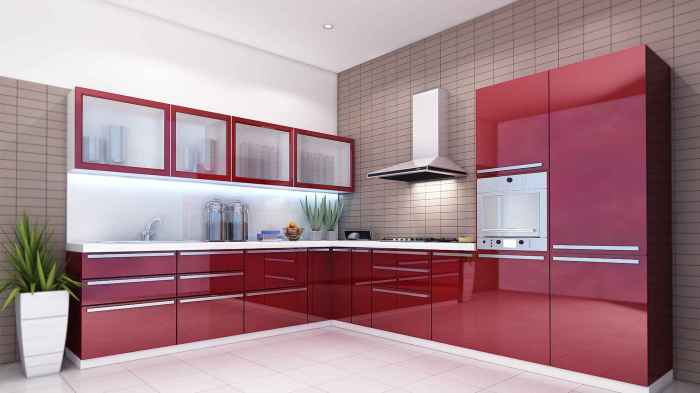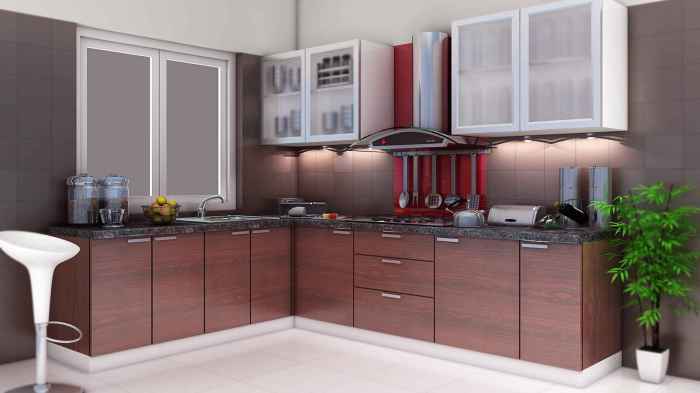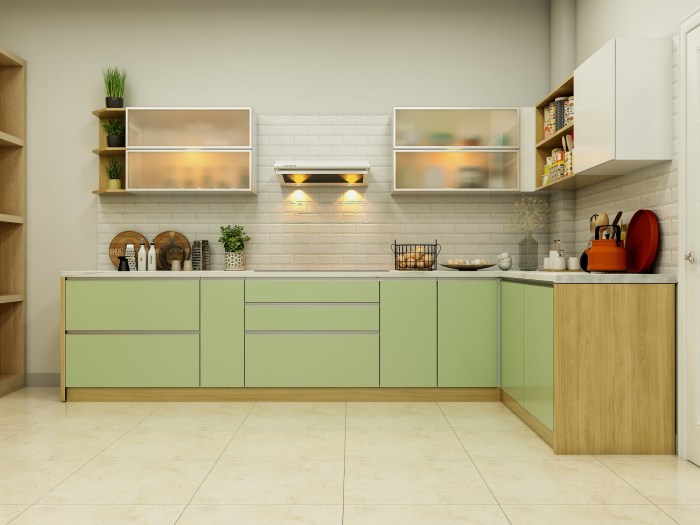Designing a Modular Kitchen That Fits Your Cooking Style is not just about creating a functional space; it’s about crafting a culinary haven that reflects your unique cooking habits and culinary aspirations. In this blog, we’ll embark on a journey to design the perfect modular kitchen that will elevate your cooking experience and make your kitchen the heart of your home.
From optimizing space to choosing materials and finishes, we’ll delve into the intricacies of kitchen design, providing practical tips and inspiring ideas to help you create a kitchen that is both stylish and efficient. Whether you’re a seasoned chef or a novice cook, this guide will empower you to design a modular kitchen that perfectly suits your needs.
Space Planning
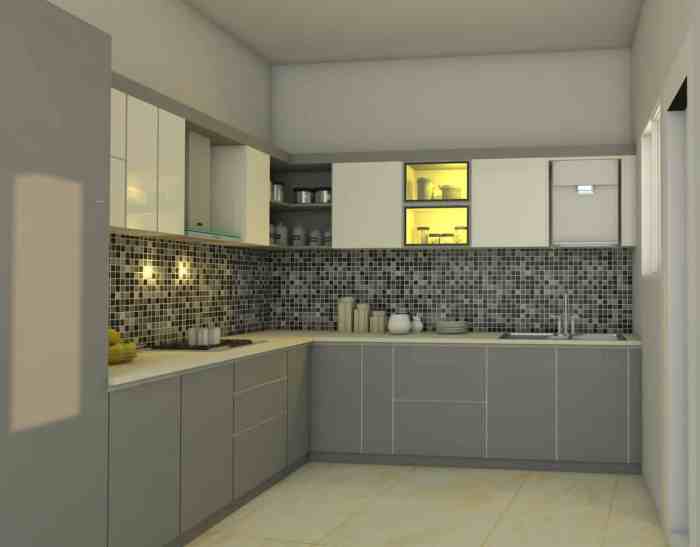
Optimizing your kitchen space is crucial for creating a functional and efficient cooking environment. A well-planned kitchen allows you to move around freely, access your tools and ingredients effortlessly, and maximize storage capacity.
To maximize storage and counter space, consider incorporating vertical storage solutions such as shelves, hanging racks, and drawers. Utilize the space above your cabinets by installing floating shelves or magnetic knife strips. Keep frequently used items within easy reach by storing them in drawers or on lower shelves.
The Kitchen Triangle
The kitchen triangle is a design concept that creates a functional workflow between the stove, sink, and refrigerator. By positioning these elements in a triangular formation, you minimize the distance you need to travel while cooking, making the process more efficient.
- The ideal distance between the stove and sink is 4-9 feet.
- The distance between the sink and refrigerator should be 4-7 feet.
- The distance between the stove and refrigerator should be 4-6 feet.
Choosing Materials and Finishes
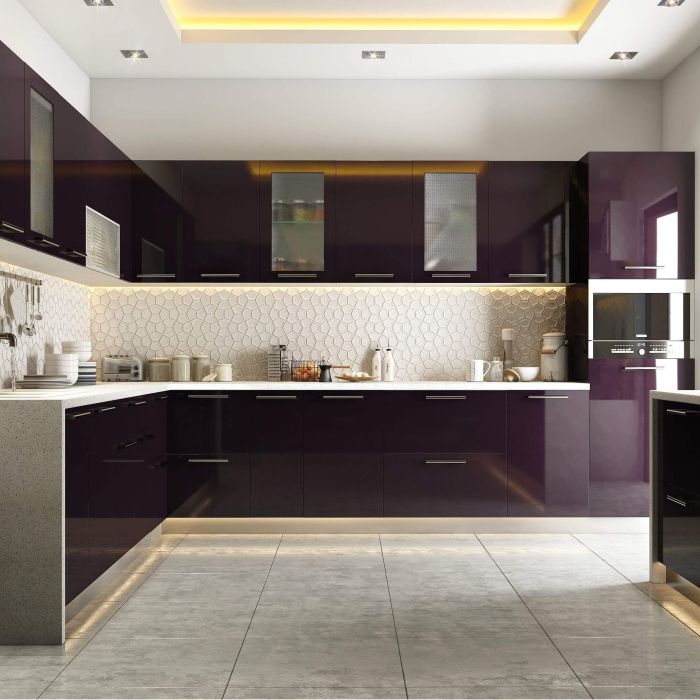
The choice of materials and finishes can greatly impact the functionality, durability, and overall aesthetic of your modular kitchen. Here are some key considerations:
Countertops
Countertops are a crucial surface in any kitchen, and their material should be chosen carefully based on your cooking style and preferences. Popular options include:
- Granite:Durable, heat-resistant, and available in a wide range of colors and patterns.
- Quartz:Non-porous, scratch-resistant, and comes in a variety of hues and textures.
- Laminate:Budget-friendly, easy to clean, and available in numerous designs.
Cabinets
Cabinets provide storage and organization in the kitchen. Consider the following materials:
- Wood:Durable, customizable, and comes in various finishes, but requires regular maintenance.
- Thermofoil:Affordable, moisture-resistant, and available in a wide range of colors and styles.
- Melamine:Scratch-resistant, easy to clean, and comes in a variety of textures and finishes.
Flooring
Kitchen flooring should be durable, easy to clean, and complement the overall design. Options include:
- Tile:Durable, water-resistant, and comes in a variety of colors and patterns.
- Vinyl:Affordable, easy to install, and available in a wide range of styles.
- Hardwood:Adds warmth and elegance, but requires regular maintenance and can be susceptible to moisture.
Colors and Textures
The colors and textures of your kitchen finishes can significantly impact the ambiance. Consider the following:
- Light colors:Create a sense of spaciousness and brightness.
- Dark colors:Add drama and sophistication, but can make the kitchen feel smaller.
- Neutral colors:Provide a versatile backdrop that can be easily complemented with accessories.
- Glossy finishes:Reflect light and make the kitchen feel larger.
- Matte finishes:Absorb light and create a more intimate atmosphere.
Appliances
Appliances should not only be functional but also complement the kitchen’s style. Consider the following factors:
- Style:Choose appliances that match the overall design of the kitchen.
- Functionality:Select appliances that meet your cooking needs and preferences.
- Energy efficiency:Opt for energy-efficient appliances to save on energy bills.
Customization and Ergonomics
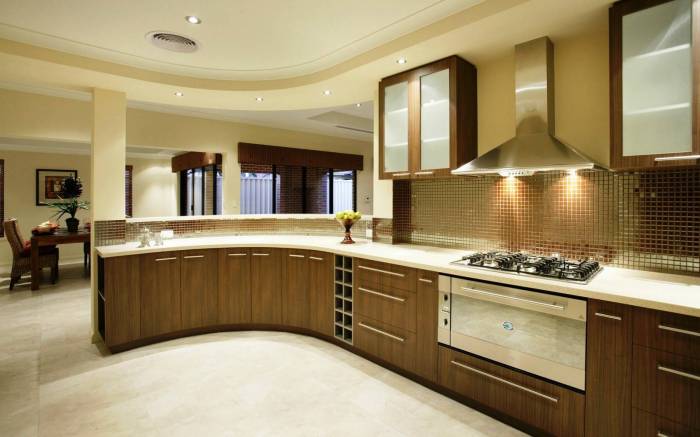
Designing a kitchen that perfectly suits your cooking style and preferences involves more than just choosing the right appliances and finishes. Customization and ergonomics play a crucial role in creating a kitchen that is not only beautiful but also comfortable and efficient to use.
Customizing your kitchen to fit your height and cooking habits can provide numerous benefits. A kitchen that is tailored to your specific needs can reduce strain, improve posture, and make cooking tasks easier and more enjoyable. Adjustable features, such as pull-out shelves and height-adjustable work surfaces, allow you to customize the kitchen to your unique requirements.
Pull-Out Shelves
Pull-out shelves are a fantastic way to maximize storage space and improve accessibility. They provide easy access to items stored in deep cabinets, eliminating the need to reach or bend awkwardly. Pull-out shelves can be installed in base cabinets, pantries, and even under sinks, making it easier to store and retrieve pots, pans, and other kitchen essentials.
Height-Adjustable Work Surfaces
Height-adjustable work surfaces allow you to customize the height of your countertops to suit your height and cooking style. This feature is particularly beneficial if you have back problems or if you simply want to be able to work at a more comfortable height.
Height-adjustable work surfaces can be raised or lowered with the touch of a button, providing you with the perfect work surface height for any task.
Other Ergonomic Considerations
In addition to pull-out shelves and height-adjustable work surfaces, there are several other ergonomic considerations to keep in mind when designing your kitchen. These include:
- Proper lighting:Good lighting is essential for safe and efficient cooking. Make sure your kitchen has plenty of natural light, and consider adding under-cabinet lighting to illuminate work surfaces.
- Comfortable flooring:Standing for long periods of time can be tiring, so choose flooring that is comfortable to stand on. Cork or rubber flooring are good options, as they provide some cushioning.
- Non-slip surfaces:Wet or greasy floors can be hazardous, so make sure your kitchen has non-slip surfaces. You can achieve this by using non-slip mats or by choosing flooring with a non-slip finish.
By incorporating these ergonomic considerations into your kitchen design, you can create a space that is both stylish and functional. A well-designed kitchen will make cooking more enjoyable and efficient, and it will help you to avoid discomfort and injury.
Lighting and Ventilation
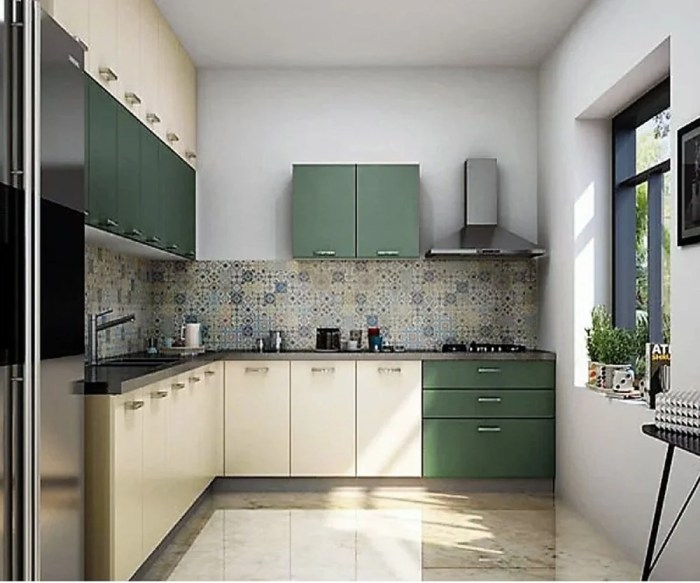
A well-lit kitchen is essential for safe and efficient cooking. Natural light is always the best option, but it’s not always possible to get enough of it. Under-cabinet lighting and recessed lighting can help to fill in the gaps.
Ventilation is also important in a kitchen. It helps to remove odors and smoke, and it can also help to keep the kitchen cool. There are a variety of ventilation options available, including range hoods, downdraft vents, and ceiling fans.
Lighting Options
- Natural light:The best way to light a kitchen is with natural light. If you have a window in your kitchen, make sure to keep it uncovered as much as possible.
- Under-cabinet lighting:Under-cabinet lighting is a great way to add extra light to your kitchen. It can be used to illuminate your work surfaces and to create a more inviting atmosphere.
- Recessed lighting:Recessed lighting is a more subtle way to add light to your kitchen. It can be used to create a more even distribution of light throughout the room.
Ventilation Options
- Range hoods:Range hoods are the most effective way to remove odors and smoke from the kitchen. They work by drawing air up through a duct and exhausting it outside.
- Downdraft vents:Downdraft vents are another effective way to remove odors and smoke from the kitchen. They work by drawing air down through a duct and exhausting it below the floor.
- Ceiling fans:Ceiling fans can help to circulate the air in your kitchen and keep it cool. They can also help to remove odors and smoke.
Smart Kitchen Features
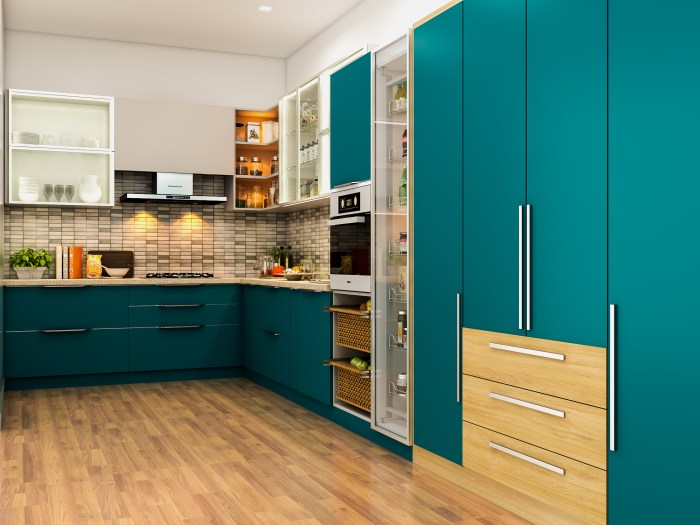
The modern kitchen is undergoing a technological revolution, with smart appliances and features becoming increasingly common. These smart technologies offer a range of benefits, from enhanced convenience and efficiency to improved safety and energy savings.
Benefits of Smart Kitchen Appliances
Smart kitchen appliances, such as ovens, refrigerators, and dishwashers, offer a number of advantages over traditional models. These appliances can be controlled remotely via a smartphone app or voice assistant, allowing you to preheat your oven, adjust the temperature of your refrigerator, or start a dishwasher cycle from anywhere in your home.
This can save you time and hassle, especially if you’re running late or have your hands full.Smart appliances can also help you cook more efficiently. Many smart ovens come with built-in recipes and cooking guides, so you can easily follow along with step-by-step instructions.
Some smart refrigerators can even track the food you have on hand and suggest recipes based on your preferences. This can help you reduce food waste and make meal planning easier.
Drawbacks of Smart Kitchen Appliances
While smart kitchen appliances offer a number of benefits, there are also some potential drawbacks to consider. One potential downside is the cost. Smart appliances tend to be more expensive than traditional models, so it’s important to weigh the benefits and costs before making a purchase.Another
potential drawback is the security risk. Smart appliances are connected to the internet, which means they could be vulnerable to hacking. This could allow hackers to access your personal information or even control your appliances remotely. It’s important to make sure that your smart appliances are properly secured and that you only connect them to a trusted network.
Conclusion, Designing a Modular Kitchen That Fits Your Cooking Style
Smart kitchen features offer a range of benefits, from enhanced convenience and efficiency to improved safety and energy savings. However, there are also some potential drawbacks to consider, such as cost and security risks. It’s important to weigh the benefits and costs before making a purchase and to make sure that your smart appliances are properly secured.
Final Wrap-Up
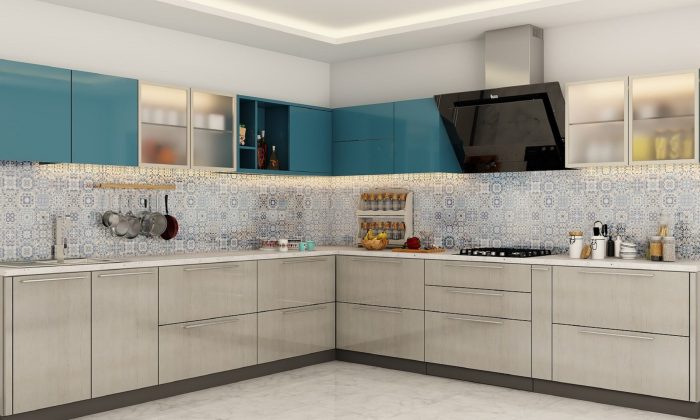
As you embark on this exciting journey of designing your modular kitchen, remember that it’s not just about creating a beautiful space; it’s about creating a space that reflects your passion for cooking and makes your culinary dreams a reality.
Embrace the endless possibilities of modular design, and let your kitchen become a testament to your creativity and culinary adventures.
FAQ Compilation: Designing A Modular Kitchen That Fits Your Cooking Style
What are the key considerations for space planning in a modular kitchen?
Space planning involves optimizing the layout of your kitchen to ensure efficient workflow and maximize storage. Consider the placement of major appliances, such as the refrigerator, stove, and sink, to create a functional kitchen triangle. Utilize vertical space with tall cabinets and shelves, and incorporate pull-out drawers and corner units to maximize storage.
How do I choose the right materials and finishes for my modular kitchen?
The choice of materials and finishes depends on your personal style and cooking habits. Consider durable materials like quartz or granite for countertops, and choose cabinet finishes that complement your overall kitchen design. Explore the impact of colors and textures to create a cohesive and visually appealing space.
What are the benefits of customizing a modular kitchen?
Customization allows you to tailor your kitchen to your specific needs and preferences. Adjust cabinet heights, incorporate pull-out shelves, and choose appliances that fit your cooking style. By customizing your kitchen, you can create a space that is both comfortable and efficient to use.
